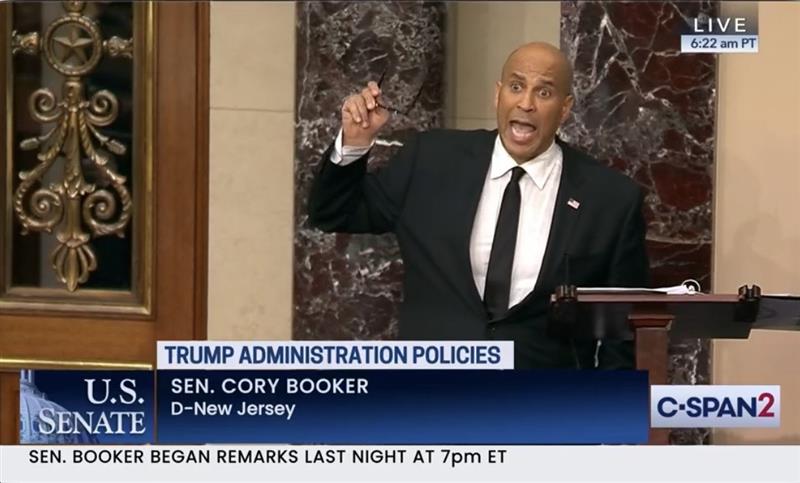Using Advanced Metrics to Bet NFL Totals: Yards per Play, Success Rate, and EPA
Sports betting has evolved beyond simple win-loss predictions. Advanced analytics offer sharper insights, particularly when betting on NFL totals. While traditional stats like points per game can be misleading, advanced metrics such as yards per play (YPP), success rate (SR), and expected points added (EPA) provide a clearer picture of a team’s offensive and defensive […] The post Using Advanced Metrics to Bet NFL Totals: Yards per Play, Success Rate, and EPA appeared first on BlackSportsOnline.

Sports betting has evolved beyond simple win-loss predictions. Advanced analytics offer sharper insights, particularly when betting on NFL totals. While traditional stats like points per game can be misleading, advanced metrics such as yards per play (YPP), success rate (SR), and expected points added (EPA) provide a clearer picture of a team’s offensive and defensive efficiency. Understanding these key metrics helps bettors make informed wagers by identifying trends that oddsmakers may overlook.
Why Traditional Stats Fall Short
Many bettors rely on basic statistics like total yards or points scored to predict NFL game outcomes. However, these numbers often lack context. A team might accumulate impressive yardage but struggle to score due to turnovers or poor red-zone efficiency. Conversely, a team with modest yardage totals might capitalize on field position, defensive takeaways, or special teams play.
Advanced metrics bridge these gaps by measuring efficiency instead of raw totals. Yards per play, success rate, and EPA each provide a different perspective on team performance. By using them together, bettors can gain a more accurate understanding of a game’s potential scoring output.
Yards per Play: Measuring Efficiency
Yards per play (YPP) measures how much yardage a team gains or allows on average per offensive snap. This simple yet powerful stat reflects overall efficiency better than total yardage, as it accounts for pace and play volume.
A high YPP indicates an explosive offense capable of moving the ball efficiently. Conversely, a low defensive YPP suggests a team struggles to prevent big plays. When evaluating totals, compare a team’s offensive YPP to its opponent’s defensive YPP. If both rank highly, expect a high-scoring game. If both are below league average, the under may offer value.
Pace also plays a role. A team with a high YPP but a slow tempo may not translate efficiency into total points. Teams that run fewer plays per game limit scoring opportunities, making YPP alone insufficient for predicting totals.
Success Rate: Gauging Play Effectiveness
Success rate (SR) offers a deeper look into offensive consistency by evaluating how often a team gains meaningful yardage on a given play. A play is considered successful if it meets the following criteria:
- Gains at least 40% of the yards needed on first down.
- Gains at least 50% on second down.
- Converts the required yardage on third or fourth down.
Unlike YPP, which can be skewed by explosive plays, SR reflects an offense’s ability to sustain drives. A team with a high success rate keeps its defense off the field and creates more scoring opportunities. On the defensive side, teams with low success rates struggle to get off the field, leading to longer, more productive drives for opponents.
When betting totals, a game featuring two teams with high success rates is more likely to hit the over, as sustained drives lead to scoring chances. On the flip side, matchups between teams with low success rates often result in stalled drives, favoring the under.
Expected Points Added (EPA): Predicting True Scoring Potential
Expected points added (EPA) quantifies the value of every play by measuring how much it increases or decreases a team’s expected points. It accounts for down, distance, field position, and game situation, making it one of the most predictive metrics in football.
For example, a 20-yard gain on third-and-15 is far more impactful than the same gain on first down. Likewise, a five-yard loss near the opponent’s red zone carries more weight than one near midfield. By analyzing EPA, bettors can gauge whether an offense is generating points efficiently or if a defense is preventing meaningful gains.
To apply EPA to totals betting, compare a team’s offensive EPA per play to its opponent’s defensive EPA per play. A team with a high offensive EPA facing a defense with a low EPA suggests an edge for the over. Conversely, if both units rank poorly in EPA, the under could hold value.
Combining Metrics for Smarter Bets
No single metric guarantees success, but when used together, YPP, SR, and EPA provide a comprehensive picture of a matchup. Sportsbooks set NFL lines based on public perception and traditional stats, but advanced metrics often reveal edges that Vegas oddsmakers may overlook. This gives bettors an opportunity to find value, particularly when betting the over or under on totals.
Here’s how to approach NFL over/under betting with these metrics:
- Start with YPP – Identify efficient offenses and struggling defenses. If both teams have high YPP figures, the over may be worth considering. If both defenses limit yards per play, the under could hold value.
- Check Success Rate – Confirm whether teams can sustain drives or if big plays are skewing YPP. A high success rate signals offensive consistency, making it more likely for a game to exceed Vegas totals. Conversely, teams with low success rates tend to struggle, favoring the under.
- Review EPA – Ensure that efficiency translates to actual points. If a team gains yards but lacks a strong EPA, it could mean red-zone struggles or costly turnovers, which might justify taking the under if the NFL lines suggest a high total.
By cross-referencing these stats, bettors can uncover value beyond what’s reflected in the Vegas over under NFL lines. Oddsmakers consider public betting tendencies when setting lines, but a deeper dive into efficiency metrics can highlight mismatches that aren’t immediately obvious.
Adjusting for Game Context
While metrics provide a strong foundation, external factors influence NFL totals as well. Bettors analyzing upcoming NFL games should account for variables that may not be immediately reflected in the numbers. Injuries, weather conditions, and game script all play a role in whether a matchup trends toward the over or under.
- Injuries: A high-powered offense missing its quarterback or key linemen may struggle to maintain efficiency.
- Weather Conditions: Wind, rain, or snow can disrupt passing games and lower scoring potential.
- Game Script: Teams with strong run games often control tempo and limit possessions, favoring the under. High-tempo offenses, on the other hand, increase play volume, benefiting the over.
Advanced metrics should be used alongside these considerations to make informed bets rather than relying on raw data alone.
Enhancing NFL Totals Betting with Advanced Analytics
Betting NFL totals requires more than a surface-level analysis of points scored and allowed. Yards per play, success rate, and expected points added provide a clearer, data-driven way to evaluate offensive and defensive efficiency. By combining these metrics with game context, bettors can make more accurate predictions and identify mispriced lines.
Rather than relying on outdated stats, leveraging advanced analytics can give bettors an edge in the ever-evolving world of sports betting.
The post Using Advanced Metrics to Bet NFL Totals: Yards per Play, Success Rate, and EPA appeared first on BlackSportsOnline.

 UnmutedSports
UnmutedSports 






![New Song: Ciara – ‘Ecstasy (Remix)’ [featuring Normani & Teyana Taylor]](https://150893825.v2.pressablecdn.com/wp-content/uploads/2025/06/ciara-thatgrapejuice-normani-teyana-taylor-2025-ecstasy-remix-thatgrapejuice2.jpg)



